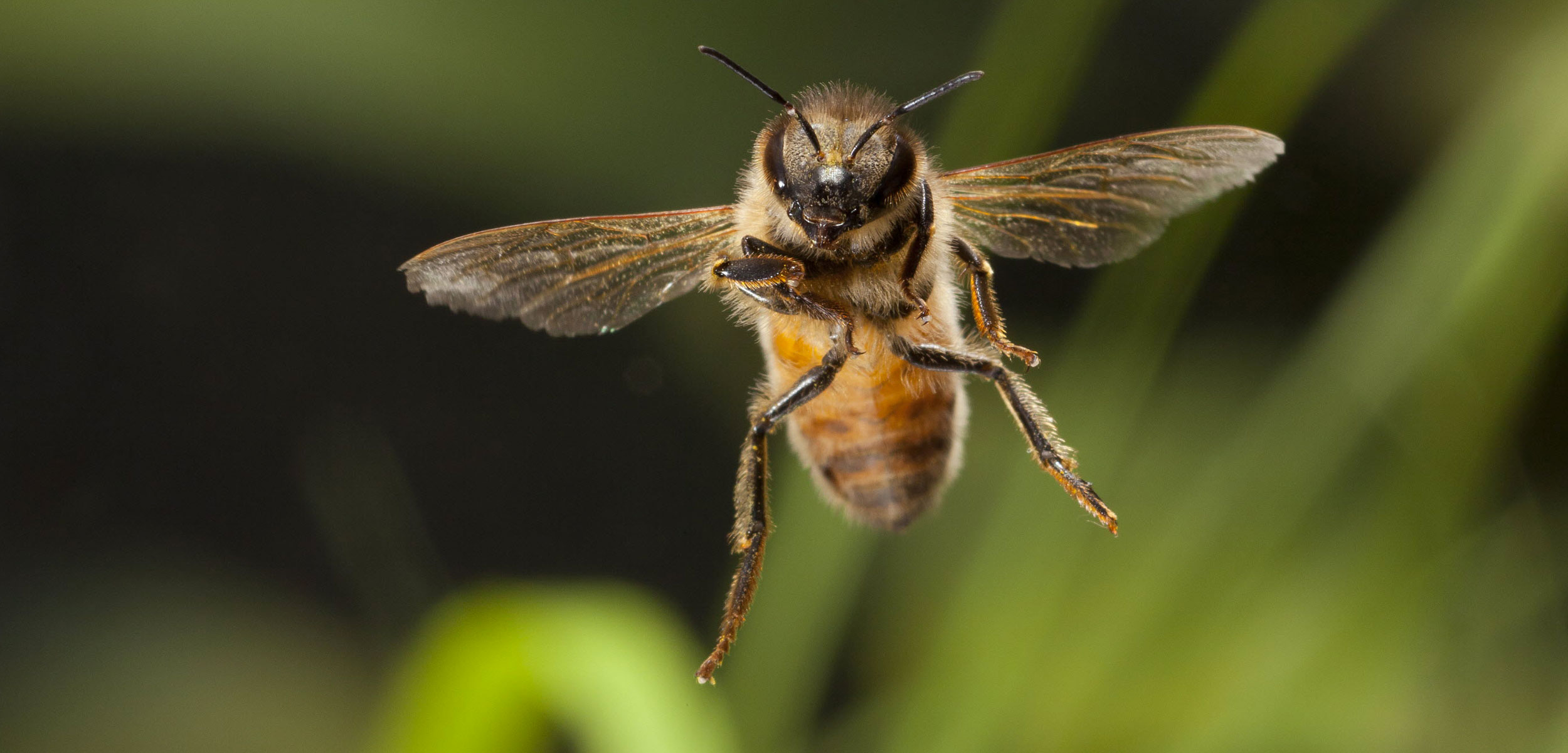Australia’s Plant Virus Sting Operation
In Australia, an experiment shows that honeybees can help scientists spot novel diseases.
Article body copy
In Australia, 200,000 honeybees have just been conscripted into the border patrol.
Cargo containers crisscross the planet, inadvertently carrying plant diseases that spread into the environment and destroy valuable crops. Since 1992, highly trained detector dogs have been sniffing out pests and diseases at Australia’s points of entry. But dogs can’t roam vast swaths of countryside day after day. Bees, however, do just that. And the material they pick up and bring back to their hives can be analyzed for the presence of plant viruses—including those that have not been spotted by other detectors.
Foraging honeybees may travel up to five kilometers from their hives while searching for nectar. On the way, they come into contact with a diverse range of plants. Their fuzzy bodies pick up pollen and other organic material, effectively sampling the environment as they go, says John Roberts, a research scientist at Australia’s Commonwealth Scientific and Industrial Research Organisation. “But the best bit is they are bringing it all back to a convenient collection point,” he says.
Bees’ unique power to survey the countryside is the basis for a new plant virus surveillance program using beehives at three Australian ports currently being trialed by Roberts and his colleagues. The bees are essentially being deployed as unwitting plant health inspectors.
The project began a few years ago when Roberts and his colleagues were sequencing genetic material collected from beehives. They were searching for pathogens that could harm bees when they realized their analyses were also revealing the DNA of plant pathogens.
In fact, in one early experiment, Roberts found that samples from beehives contained evidence of a destructive plant disease: cucumber green mottle mosaic virus. Those samples had been taken a year and a half before the virus was officially detected in that part of Australia. “We had that potential to identify a new virus really early,” says Roberts.
Since this initial work, Roberts has turned his focus to Australia’s ports, specifically those in Townsville and Portland, and the Canberra airport, where researchers had previously installed “sentinel” hives in scrubland nearby to track bee diseases that might be entering the country.
By sequencing genetic material from the bees’ bodies or from the pollen they deposit in the hives’ honeycomb, Roberts’s team has been able to verify the presence of known plant diseases. They have even detected one that hasn’t been officially found in the field: tomato ringspot virus, which harms tomato plants as well as cucumbers, raspberries, strawberries, and other crops.
A follow-up survey by biosecurity officers has not yet confirmed the presence of this virus, but Roberts says his beehive work has picked it up multiple times and he is confident it is in the country, if perhaps only at a low level. This detection could be the early warning needed to stop the virus before it spreads to valuable crops.
Many plant diseases are silent spreaders, says Stephen Parnell, an epidemiologist specializing in plant pathogens at the University of Salford in England. He says if the tomato ringspot virus is present, it may emerge after some time, perhaps when the weather changes.
Either way, he’s impressed with the idea of using bees to sample plants for invading diseases at the border. “It’s the first time I’d heard of it,” he says.
Parnell argues that a shift is needed in the way that plant pathogens are monitored because, thanks to ever-increasing global trade, more organic matter is being moved around the planet than ever before. “The world is becoming a smaller place,” he says. And countries like Australia, for which agricultural exports are worth billions of dollars, need to be on their guard.

